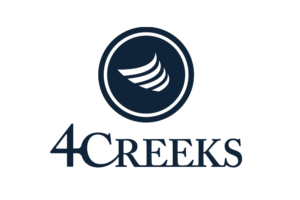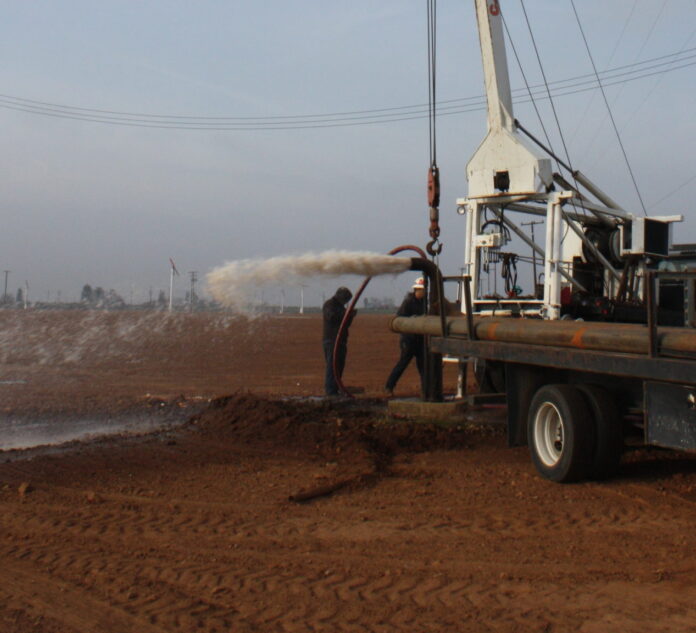The Greater Kaweah Groundwater Sustainability Agency met on Tuesday, September 26, 2023 at the Kaweah Delta Water Conservation District headquarters in Farmersville and on GoToMeetings. The video of the meeting showed the attendance was literally standing room only. The agenda listed setting allocation rates at today’s meeting.
The Meeting
Chairman Don Mills called the meeting to order at 1:00pm. General Manager Mark Larsen reported he has been invited to participate as a member of the Water Blueprint of the San Joaquin Valley Technical Committee and the board was honky dory with that. He also mentioned a letter from the Delta View Water Association with a request to become a representative of the GKGSA.
Larsen said in the future statements will go out to growers that will preview what the invoices will contain towards the end of July and they will resemble the dashboard closely. The end of the accounting year is September and it will take a while to compile the Land IQ data and develop the invoices.
2024 Allocations
The big item on the agenda that brought out so many folks to the meeting is groundwater allocations. Larsen asked Engineer Dave DeGroot of Four Creeks Engineering to explain what is going on. DeGroot started by reminding folks the Kaweah Subbasin’s Groundwater Sustainability Plan did not pass DWR’s scrutiny and is currently under review. This review process doesn’t stop the GSA from doing its duty.
Sustainability Plan did not pass DWR’s scrutiny and is currently under review. This review process doesn’t stop the GSA from doing its duty.
Two ways to monitor usage are monitoring from the pumps or the amount of water transpired and evaporated ET as documented by Land IQ satellites. Land IQ data is the default measurement for GKGSA but a grower has the option of installing pump monitors if they like. Precipitation, surface supplies and groundwater are the three water sources. DeGroot said GKGSA has three buckets to pour from; native sustainable yield, total precipitation and tier one and tier two. Native supply is percolation from natural channels like the Kaweah River. Of course the GSA only has control over native sustainable yield and tier one and two water supplies. It rains where it rains.
DeGroot said GKGSA’s overdraft is calculated by subtracting native supply and total precipitation from total consumption that equals 223,888 a/f of overdraft. The 2024 water year allocation is proposed to be .62 a/f per acre and there is no idea yet what the precipitation is yet and Tier One is .56 a/f per acre and Tier Two at .69 a/f per acre. This of course, opened a lot of discussion.
A grower wanted to know why there is such a reduction from last year’s allocation. He asked if whoever did the calculation last year didn’t know what they were doing and that’s why DeGroot is here today? Larsen said there have been leaps and bounds in the data available this year over the past. He said it isn’t perfect yet but it is improving.
Michael Hagman, GM of Lindmore Irrigation District and the East Kaweah GSA spoke asking about the overdraft and the allocation. He said his district has spent $12 million in the last two years on recharge basins and he feels the GKGSA isn’t adhering to the spirit of the subbasin coordination agreement. He likened it to a crankster stealing from you and then selling your own property back to you.
Aaron Fukuda, GM Tulare ID and the Mid Kaweah GSA said the overdraft figures are questionable and he believes there needs to be a better, more coordinated attempt to find a workable allocation for the subbasin. He said TID growers are about at the end of their patience. He told the board their growers may be facing pain but ask themselves how much pain the folks who are putting water into the ground are feeling. He said the numbers don’t work and that has to be addressed.
Someone else asked why there are three GSAs in the subbasin who can’t get along. Someone else said there has been a lot of feedback about precipitation usage and recommended a 25-year rolling average.
Rachel Glauser, Executive Director of Delta View Water Association, a white area group, said there has been a lot of progress in the past few years. She said the problem for her members is they feel left in the dark. She said they know the data compilation takes a while but it is still very late and not informing the growers. She said GKGSA needs to improve its communication and transparency. There is great concern about some of the fallowing program figures and that needs to be discussed in the open.
Someone else said the NGOs are crawling all over the GSPs and it appeared to him half a million acre feet has been over allocated to acreage that won’t use it. He said SGMA is having to invent from nothing, something. He said it is late in the game but asked his neighbors to be patient as this is a much better improvement from last year. I couldn’t tell from the video but it might have been Geoff VandenHeuvel. Sounded like him anyway.
Larsen said next year’s allocation will change but the fact that this year is a wet year won’t factor as much as might be hoped. Wet years are figured into the allocations as are dry years and won’t substantially increase allocations.
Another man said the state doesn’t have a water problem – it has a management problem. The same state, he pointed out, that teaches our children there is no difference between male and female humans. He said it is time to stand together and not allow the state to run us out of business.
Johnny Gaily spoke I believe and said there needs to be a mitigation tier. Without it the white area will go out of business. Hagman said God gives us the precipitation water and the only supply that man has any say so is CVP surface supplies. Friant does what it does as good as it can but the subbasin has to fight for its supplies.
Someone else asked what can be done to get the information out sooner. Larsen said the challenge was the amount of data that had to be developed this year in light of the GSP’s rejection. He said the good news is the subbasin pulled together to adjust the GSP. He said in the future he’d like to be presenting allocations in July and he’s hopeful to meet this schedule. He asked DeGroot about that timeline. DeGroot said he’s heard the need for better coordination over and over at this meeting. He hopes the process soon becomes one of integrating last year’s data but there is a great deal of catch up to do in order to get there. Larsen said there have been a good deal of communication at the committee level but he sees a need for more public outreach.
There was a public meeting in Tulare a while ago and while it was well attended I humbly submit it wasn’t a success. There’s a reason advertising, marketing and public relations firms aren’t hired to design engineering plans and putting on public events isn’t an engineering firm’s strongest suit.
Penalty Rates
Next attorney Aubrey Mauritson explained some differences in this year’s penalty rates from last year’s schedule. She said the estimation to address well mitigation is running at $48 million. There are three Tiers of penalty rates based on cost per acre foot. Tier three is set at $500 per a/f.
Someone said subsidence and water quality are going to be the next problem to hit and the state isn’t expected to pay to help. Someone else said to over charge as a disincentive can be as harmful as undercharging becoming an incentive to over pump. There was a hesitancy to set too much change too quickly.
Hagman said too little of a penalty is akin to buying back copper from a wire thief. Fukuda urged all the GSKs in the subbasin to work together. He said if the point of imposing a penalty is to replace the water being over pumped you know the costs of the water. If you aren’t trying to replace the water you better find out what it’s worth to the other GSAs.
penalty is to replace the water being over pumped you know the costs of the water. If you aren’t trying to replace the water you better find out what it’s worth to the other GSAs.
Someone asked if this is going to drive the permanent crop farmers out of business is it better to take a long walk off a short pier or short walk on a long pier? His point was the SGMA gives a grace period over 20-years and driving growers out of business right away isn’t the best outcome. Someone else said during the drought growers and districts have had the opportunity to improve and clean up their systems which will help save water.
There were four no votes and chairman Mills had to break the tie to charge $60 per a/f for Tier One and $120 per a/f for Tier Two.
Land Fallowing
The last item was land fallowing. GKGSA has a contract for its 2023-2024 Pilot Land Fallowing program. It includes what land is eligible to participate and the terms to do so. This was an easy item. The board passed it with minimum discussion.
Director Brian Watte asked if Larsen and DeGroot will be meeting with the other GSAs about allocations and such but this year’s allocations are voted in. Director Chris Tantau said he believes he understands Fukuda’s concerns. Fukuda said in his opinion there are two glaring errors in the assumptions used to arrive at the allocation. If they are not errors then there needs to be a lot of work done in a hurry. The board directed staff to work with the other GSAs in the subbasin before the next meeting. The next meeting will be October 9th 1:00pm. This meeting was adjourned at 2:50pm and that was that.
DISCLAIMER OF RESPONSIBILITY; Waterwrights strives to provide his clients with the most complete, up-to-date, and accurate information available. Nevertheless, Waterwrights does not serve as a guarantor of the accuracy or completeness of the information provided, and specifically disclaims any and all responsibility for information that is not accurate, up-to-date, or complete. Waterwrights’ clients therefore rely on the accuracy, completeness and timeliness of information from Waterwrights entirely at their own risk. The opinions expressed in this report are those of the author and do not represent any advertisers or third parties.
does not serve as a guarantor of the accuracy or completeness of the information provided, and specifically disclaims any and all responsibility for information that is not accurate, up-to-date, or complete. Waterwrights’ clients therefore rely on the accuracy, completeness and timeliness of information from Waterwrights entirely at their own risk. The opinions expressed in this report are those of the author and do not represent any advertisers or third parties.
ALL RIGHTS RESERVED. Copyright 2023 by Don A. Wright
SGMA The Sustainable Groundwater Management Act of 2014 calls for the formation of Groundwater Sustainability Areas within Basins and Sub-basins to develop Groundwater Sustainability Plans.
Greater Kaweah GSA JPA – Chair Don Mills-Lakeside Water ID, Vice Chair Chris Tantau-Kaweah Delta WCD, Pete Vander Poel-County of Tulare, Ernie Taylor-Kings County WD, Greg Milleman-Cal Water Service, Eric Shannon-St Johns WD, Paul Boyer-Rural Communities Committee, Brian Watte-Stakeholder Committee representative.
Mark Larson-General Manager, Aubrey Mauritson-Legal Counsel
Offices shared with the Kaweah Delta Water Conservation District, 2975 Farmersville Blvd., Farmersville, CA 93223 Tel. 559/747-5601
DWR Listing: Basin San Joaquin Valley, Sub Basin Kaweah 5-022.11






























